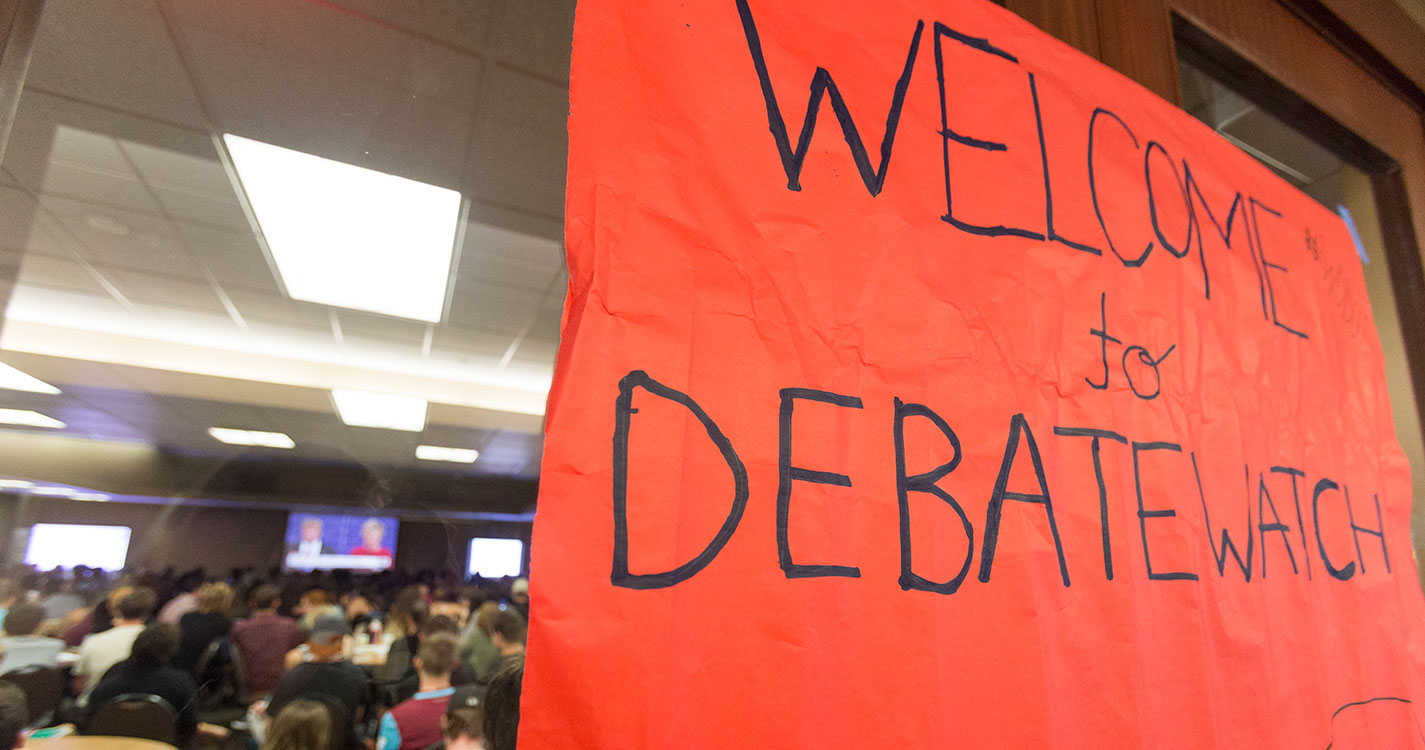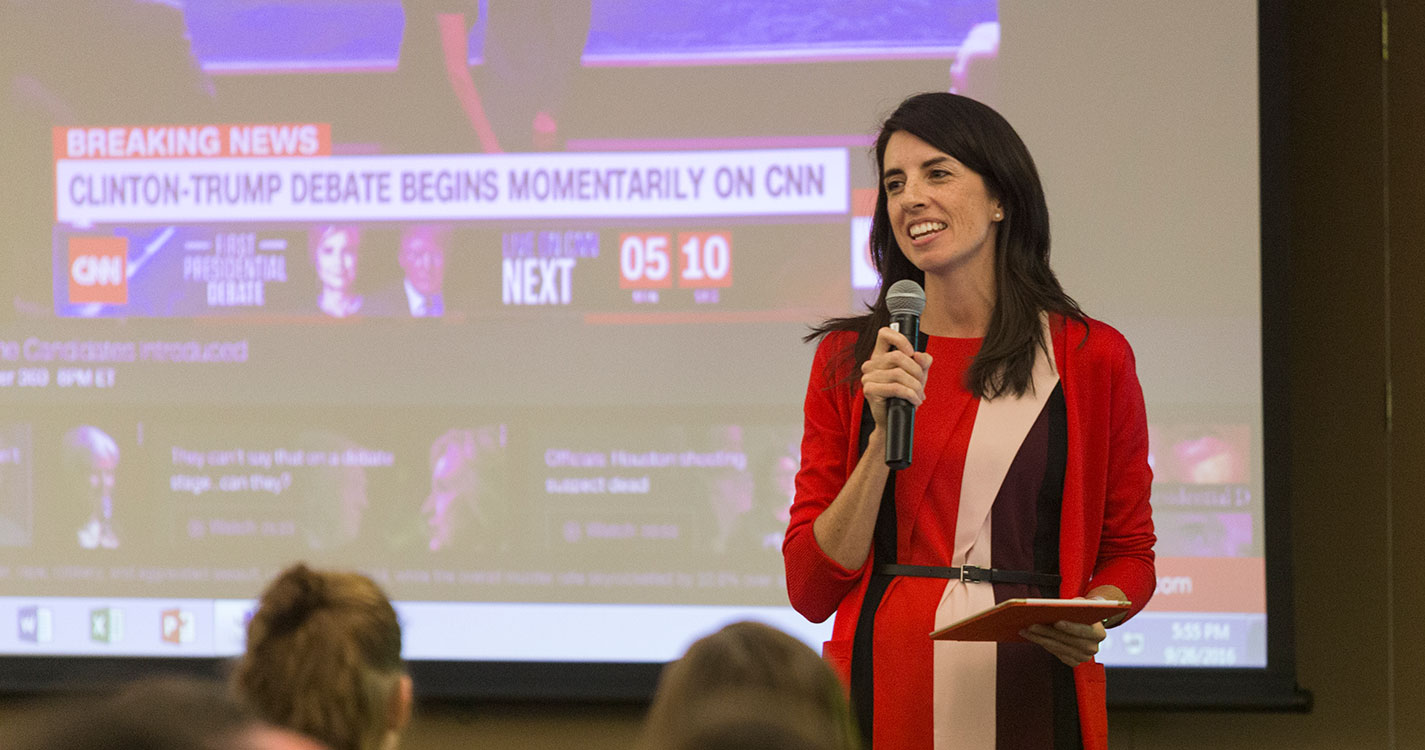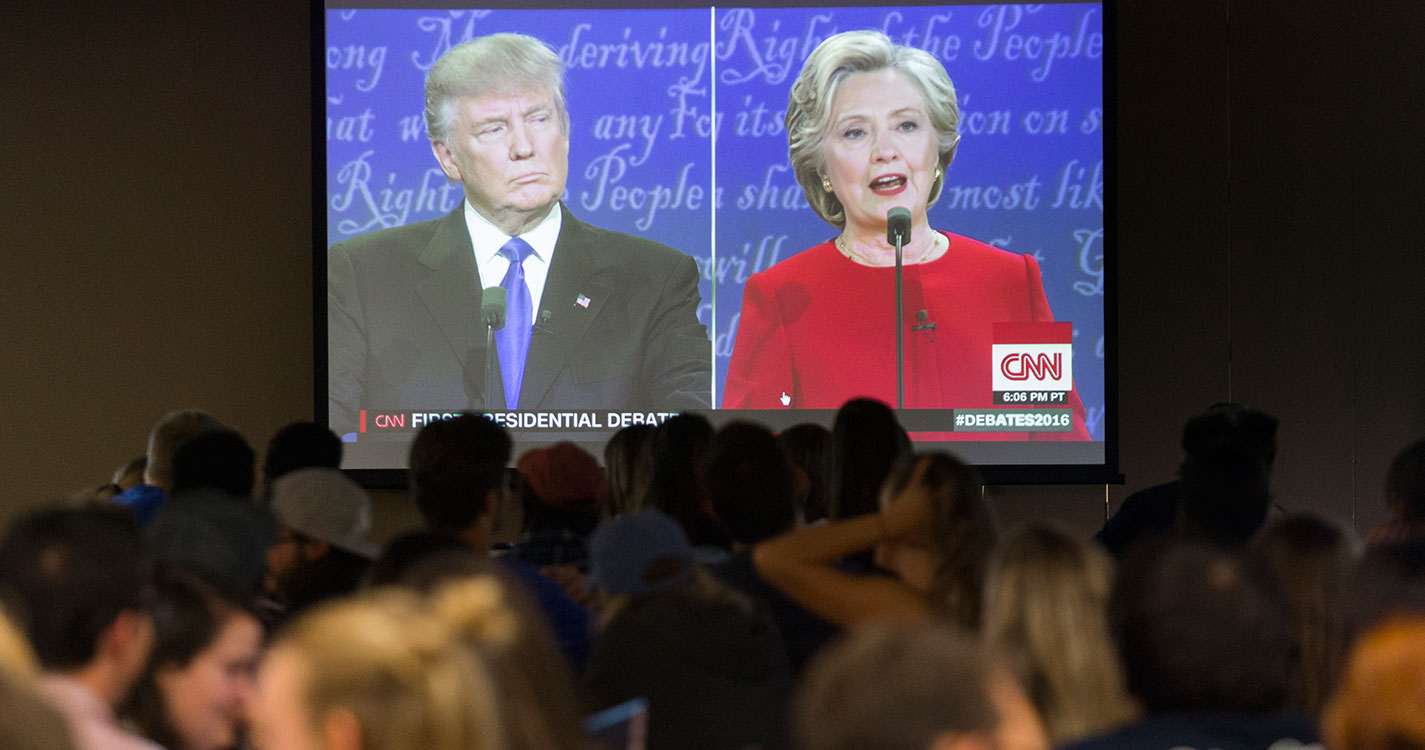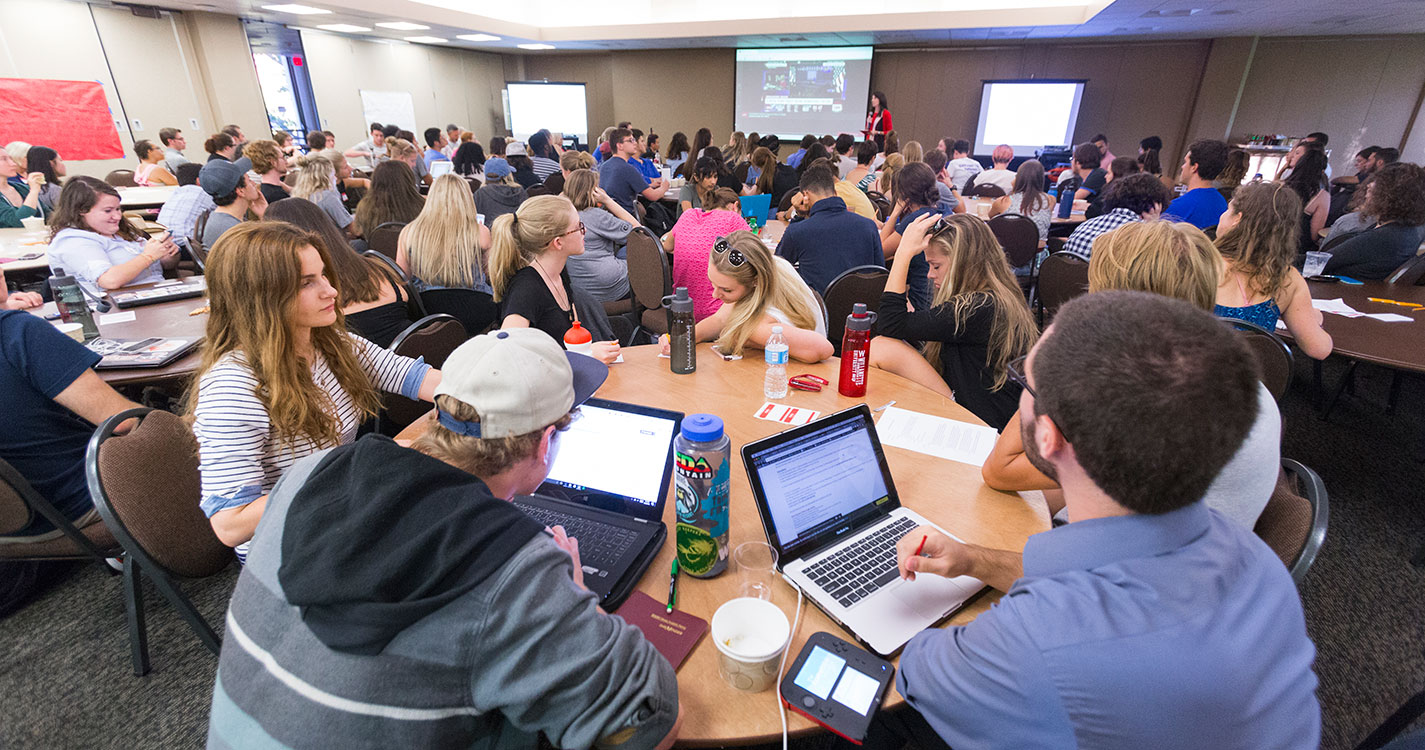The first televised presidential debate between Hillary Clinton and Donald Trump drew gasps and guffaws from Willamette students.
Riveted to the TV screens and their own Twitter feeds, hundreds packed into the Cat Cavern on Monday, Sept. 26, for DebateWatch 2016 to view and discuss the highly-anticipated debate between presidential candidates Hillary Clinton and Donald Trump. The event was so popular, some stood outside the room to watch.
At a time when the nation is passionately divided over the two candidates, the DebateWatch events are intended to strengthen students’ civic engagement and bring the community together to reflect on and discuss the election. Organized by students in a civic communication and media (CCM) course, the next events will be held from 5:45–8 p.m. Oct. 9 and Oct. 19 at the Cat Cavern.
After a brief introduction by CCM professor Cindy Koenig Richards, the crowd watched the debate then engaged in small-group discussions facilitated by students.
The class also coordinated Twitter engagement with faculty and students at 40 other colleges and universities. The Twitter feed of student and public comments, as well as live fact-checking by the Tampa Bay Times’ PolitiFact project, was projected on the wall. Students tweeted with #wudw for Willamette University DebateWatch and #trdw — the “team rhetoric debate watch” tag used by rhetoric-focused programs at colleges and universities nationwide.
This is the second series of DebateWatch, which is part of the “Civic Communication and Media 361: The Public Sphere” course. In 2012, the event drew more than 600 on-campus participants and engaged 23 other campuses on Twitter.
For most students, this year’s event was their first opportunity to participate in a presidential election. “It was all new to me, and I was just taking it all in,” says CCM major Danielle Saunders ’18. She also emphasized the importance of inclusivity and reaching out to invite diverse on- and off-campus groups, saying, “I think it’s important for all citizens in a democracy — especially college students — to hear the flip side of what they discuss in class or at home.”
More people attended this year’s event than the previous ones. Richards says the growth was partly driven by fascination with the election, but it also reflects student effort to “create a place where we can be more than just spectators, and come together and engage.”




